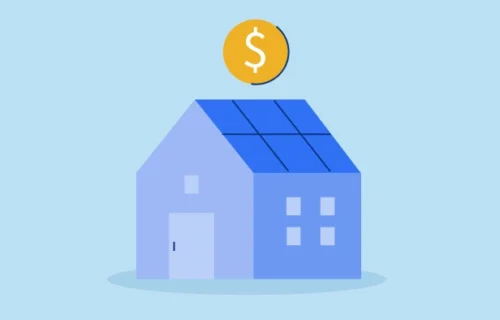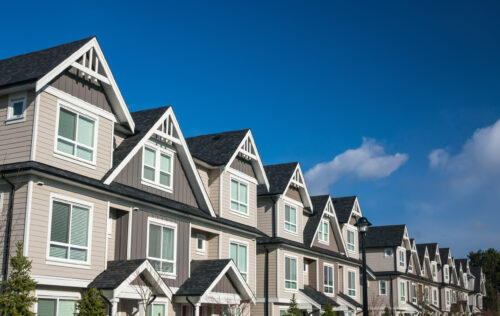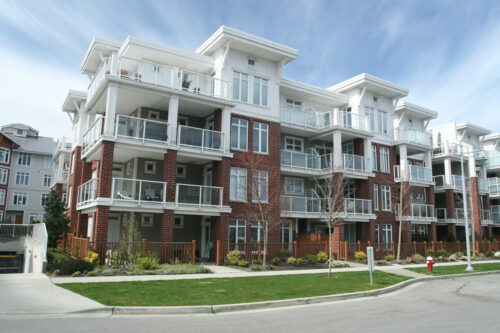
Connect with a Lima One expert today!
If you’d like to know more about this topic or see how it applies to your project, let’s talk.
Investing in Multifamily Workforce Housing
Why Investors Should Look for Multifamily Workforce Rental Housing
The United States is in an affordable housing crisis. While state governments seek to draft legislation to address this problem, the reality is that the private sector will have to be major stakeholders in any solution. And this leads to a good news/bad news situation.
The bad news is that many lenders look askance at affordable housing opportunities and decline to finance Class B or Class C multifamily properties. That’s especially true in secondary and tertiary markets outside of the top 50 or so MSAs. Institutional lenders just aren’t as comfortable doing business in those areas because they focus on lower populations, older structures, and more risk. So they provide funding for new Class A projects in hip and happening downtowns, creating housing that many people want but few can actually afford.
The good news is that these industry trends can provide you incredible opportunities as a real estate investor. If you can find the right opportunity and the right lender, you can profit with workforce housing investments. That’s good news for your balance sheet, and for the communities where you invest.
One of the reasons that Lima One Capital exists is to strengthen the communities in which we lend. When our borrowers invest in rentals, with value-add rehabs or stabilization strategies, they make housing better in their areas. Doing this with Class B and Class C multifamily properties creates exactly the kind of workforce rental housing that is too hard to find in many markets around the country.
When this happens, communities benefit, renters benefit, investors benefit, and lenders benefit.
So how can you find the right workforce housing investments for your real estate portfolio? This primer will help you discover if workforce rental housing is the right fit for your REI portfolio.
What is affordable housing?
The U.S. Department of Housing and Urban Development (HUD) defines affordable housing as households who pay 30% or less for housing costs (including utilities). Those who pay more than 30% relative to their area’s median income are considered cost burdened. This is a pervasive issue. In fact, HUD says that 12 million renter and borrower households pay more than 50% of their annual income for housing.
In growing areas, the lack of affordable housing is a problem that quickly multiplies. New construction costs require that new multifamily housing be high-yield Class A properties. This pushes the workforce out of urban centers, leading to transportation and parking problems. This can result in quickly gentrified areas and problems finding enough workers for downtown jobs in the service industry. The root problem of affordable workforce housing causes more and more problems for cities to address.
What areas need workforce housing?
Affordable workforce housing is at a premium in many large, growing markets. But it’s not being built, which creates opportunities for value-add rehabs and stabilization projects on older properties. This is true of the multifamily stabilization project Lima One recently financed in Houston.
You can also look for opportunities in smaller markets based on job creation. Picture a plant coming into a smaller community to add hundreds of jobs. Where are those people going to live? Workforce housing that provides a clean, safe place to live at affordable rents is a win/win situation.
Real estate investors may want to pay special attention to workforce housing in Opportunity Zones, where investments in workforce housing may qualify for tax benefits.
Examples of workforce housing wins
Lima One Capital worked with a sponsor who found this situation in Rocky Mount, NC. The investor found a Class C property in disrepair in this small town in Eastern North Carolina. A manufacturer was opening a plant in the area, and there was a significant shortage of affordable housing to serve the growing workforce.
With a loan from Lima One, the investor cleaned up the property and made it a quality option for factory workers, as well as employees at a nearby hospital system. No other direct lender would have seen this property as an opportunity, but Lima One did, and the result has been a huge win both for the investor and for the Rocky Mount community.
This project in Texarkana, Texas, has a similar story. The market is not one that most lenders would consider, but Lima One and a strong investor sponsor identified a need for workforce housing based on large employers in the area. The result was a value-add loan to reinvigorate a 61-unit property that fills an affordable housing gap in the area.
Lima One Capital is experienced in helping borrowers who find properties that can serve workforce housing needs with upgrades to safety, maintenance, and tenant service. We view it as our job to understand and mitigate risks on these deals so we can facilitate loans that other companies won’t.
Our CEO, Jeff Tennyson, recently told Housing Wire that “Our loans transform America’s neighborhoods and allow families a better quality of life. Our borrowers acquire properties needing meaningful improvement, as well as rental properties that assist families in living in a better quality neighborhood.”
These types of multifamily property loans do just that by providing quality workforce housing that meets an affordable housing need.
Subscribe for More Insights
Get the latest industry news & Lima One updates.








